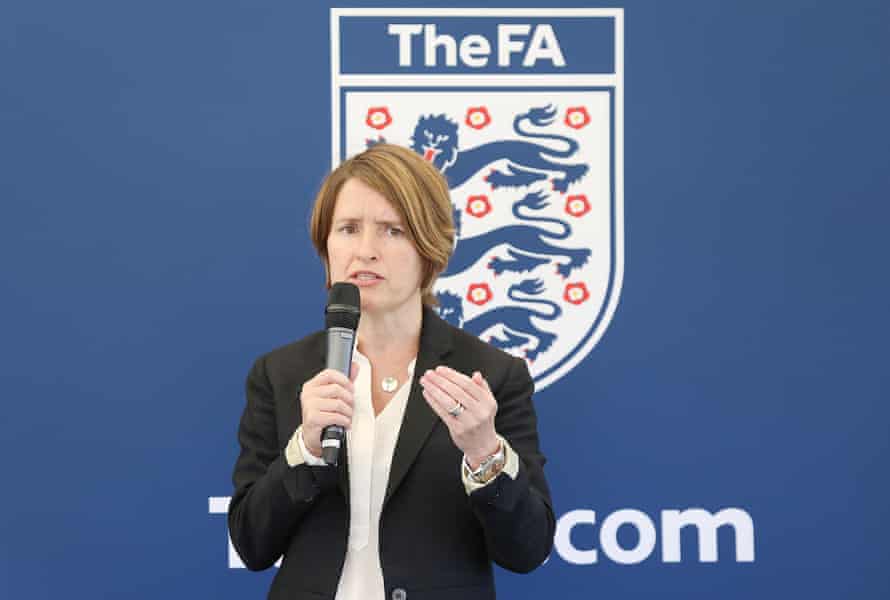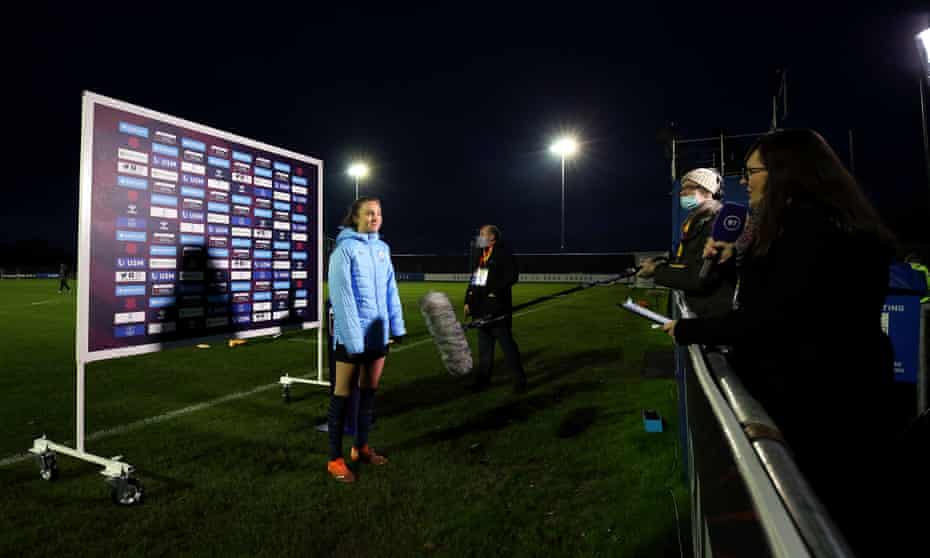On Friday I asked the FA director of the women’s professional game, Kelly Simmons, whether she felt emotional about this new broadcast rights deal for the Women’s Super League, having spent much of her 30 years at the FA driving the development of the women’s game. Why? Because I had struggled to compose myself before the press call.
“While we’ve been developing this it’s been so hard to sit on it because it’s so exciting for the women’s game. It is transformational,” Simmons said. “When I first came into this role we said that we really thought women’s football could really break into the mainstream and this is mainstream, this is prime slots on television, big audiences, week in week out.”
After reading through the details of a record-breaking three-year broadcasting deal with BBC and Sky Sports a short time before the briefing, the potential impact of it hit me in the gut for the same reasons. That feeling did not subside and waves of emotion washed through me at regular intervals throughout the day.
I imagine there will be many, players, coaches, fans, volunteers and those working on the administrative side of the game who will also experience an overwhelming rush of different, mainly positive, feelings on reading the news of the historic first unbundled broadcast rights deal for the WSL and, according to the FA, the biggest for any women’s football league in the world.

It is impossible to overstate its significance. Almost two years to the day since the gamechanging sponsorship by Barclays was announced – a deal understood to be worth closer to £20m than the initially reported £10m – a further £8m a season is being funnelled into the top of the game and some of that directly into the pockets of clubs.
That this deal has been done amid a global pandemic that has hit the finances of every media organisation is staggering. It is pure speculation, but not unreasonable to assume, that pre‑Covid this deal could have hit eight figures per season.
With the WSL teams receiving 75% of the share for clubs, some evenly split and some on merit, and teams in the Championship sharing a 25% stake there is a real effort being made to lift the means and ambitions of clubs across the top two tiers.
At this stage there is no money for further down the pyramid, but it is “one for us to look at as the revenues grow,” as Simmons said while adding that the new Women’s National League board would be looking at ways to grow revenue. “Ultimately, it’s certainly a decision for women’s football, as revenue grows you distribute that down to the whole pyramid. But for now, with the first deal it’s tiers one and two.”
For those struggling to stay afloat in the WSL and Championship, whether that be through not having the means to invest more or not having the broader support and commitment from their wealthier parent clubs, this is more than a lifeline. Not only does it help those who are just getting by to grow, it demonstrates to those clubs that have been hesitant, or have boards that have struggled to see the worth of women’s football, that the game is growing and there’s a tangible value to it.
Big sides have a choice: they can treat this as additional money, or use it to reduce the loans or gifted payments that they all get from their parent clubs. “We’ve always said to the clubs ‘believe and invest’,” Simmons said, “and now this will be the start of seeing that there’s an ability for the game to take profits and [move away from a] reliance, long term, on the men’s game and to grow its own revenue. This is a fantastic start in that sense.”
That some of the money will be distributed evenly is huge too. It is recognition on the part of clubs and the board that in order to grow the league healthily and maintain and increase competitiveness, the teams at the top cannot be given the lion’s share.

This is all an important step towards the sustainability of the women’s game and of women’s teams and a pushback on the increasing reliance on money from Premier League clubs. What perhaps triggers emotions more is the almost ideological commitment of two of the biggest broadcasters in the game to the sport, a decision, as the FA director of commercial and marketing, Kathryn Swarbrick, put it, to “monster up” women’s football.
This is not a token gesture or charity. How can we say that so assuredly? Because this is not online-only broadcasting of women’s football, it is not being shunted on to fringe channels, this is a commitment to show games on the biggest subscription and free-to-air channels in football every single week. The fact that it is even conceivable that a big WSL game shown on BBC One could attract superior viewing figures to a Premier League game shown on Sky or BT or Amazon is incredible.
Finally, the rights to women’s sports are being unbundled from men’s packages and a value has been ascribed to it. Why does it need a value? Because if no one knows what it’s worth or that there is money to be made, then how can commercial investment be driven? How, more significant, when capitalism embeds the import on the financial value of things into people, can attitudes be changed?
What better way to combat the “no one wants to watch it” or the “no one cares” brigade than the biggest players in football media, that value their audience share and/or subscription rates, paying big money to put women’s football on their biggest channels?
Of course money is not the only way to measure the worth of something. Women’s football has always had huge value, huge social value. This deal plunges women’s football into the mainstream and helps improve the quality of the product. These things go a long way to opening the eyes of a huge audience to its impact as a sport and socially.
from Football | The Guardian https://ift.tt/391Ro6i
via IFTTT

No Comment